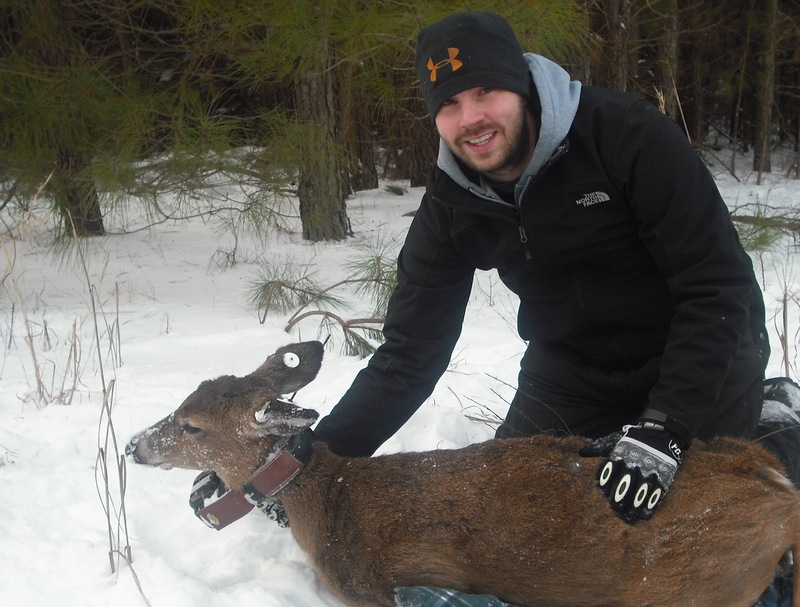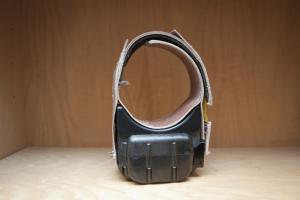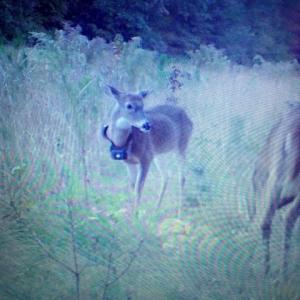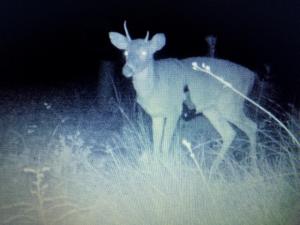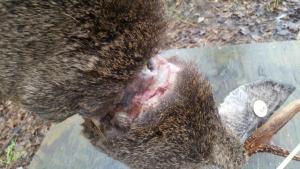Wildlife research project encounters defective technology
Sussex County landowner and hunter Kenny Hopkins says he will limit his role in a three-year-long research project studying adult, male deer after animals were found with severe neck injuries.
Two years ago, Hopkins opened his land to researchers, who began tagging juvenile male deer in efforts to learn more about white-tailed bucks' travel patterns, home range and mortality rates through a $395,000 Delaware Division of Fish & Wildlife grant. In 2015, researchers expanded the project to include mature bucks, fitting 14 deer with $2,500 GPS collars – purchased through a separate grant – that left nasty neck wounds on three of the deer.
If you find a research deer
When researchers collar deer for studies, they also place identification tags on their ears. If anyone encounters a tagged deer, check the collar or ear tag for identifying information and contact researchers with the deer's status and location at 302-831-4621.
“Everyone who hunts appreciates the wildlife,” Hopkins said. “The deer just don't need to go through that.”
Researchers expected a percentage of study animals would be killed or injured by hunters, vehicles and disease, but Hopkins, about a dozen other landowners participating in the study, state and University of Delaware researchers and the manufacturer were shocked to find that a small sample were being hurt by the equipment used to passively study their life cycle.
“There are hunters and landowners that have been made aware of the injuries and are upset or disappointed, and justifiably so,” said Joe Rogerson, program manager for species conservation and research with the Delaware Division of Fish & Wildlife. “We're as frustrated, if not more so, than they are.”
Researchers were particularly interested to find out how bucks behave during the rut – when they bulk up in muscle mass, travel broad distances and fight for the right to reproduce – which usually begins in mid-October, in preparation for the late fall breeding season.
But the rut may have been the reason the collars caused serious damage, Rogerson said.
During the rut, a buck's neck can increase from 14 inches to 19 or 20 inches in diameter, and fighting for territory or breeding rights is common. Rogerson said he suspects injuries began only a few weeks prior to the deer being found.
When the first deer suffering from a gash around its neck, in the exact place the collar would have been, was discovered on Nov. 12, researchers thought it may have been a fluke. But when a second injury was reported about a week later, they realized the problem was more than one isolated incident.
“Within 30 minutes, we logged into each of the collars and hit the release button,” Rogerson said. “We wanted to eliminate the potential for any further impacts to those animals that still had collars on.”
On the top of the neck, friction from the collar had rubbed away hair, cut into the skin and caused a sore deep enough to penetrate the animal's meat and tissue, Rogerson explained. It had become an open wound and caused infection.
“It certainly was not something we wanted to see by any means,” Rogerson said. “It's new technology. You're trying new things. All the testing you're trying to do, hoping you got it right, but clearly more research and testing and a new design needs to go into this type of equipment.”
Eight of the 14 collared deer had been harvested, hit by vehicles or died from disease. When researchers remotely released collars from the remaining six bucks, researchers also abandoned the potential to collect important data about the movements of rutting bucks.
“We've never done a project like this with male deer in our state,” Rogerson said. “There's data and information that would be very beneficial, but we're going to move forward cautiously because, at the end of the day, it's about the animal welfare more than the information we collect.”
Most of the remotely released collars have been retrieved, but two are unaccounted for: One has been defective since the beginning of the study and may have sustained water damage; the other did not completely release, but is expected to fall off its subject any day.
The collars are supposed to expand 8 to 10 inches, Rogerson said, and similar designs worked with no problems in previous studies with mule deer in western states. But researchers suspect that a piece of leather added to hold an antenna and placed underneath the elastic band may have interfered with the collars' ability to expand.
“Clearly there is some kind of design flaw,” Rogerson said.
Tom Garin of Minnesota-based Advanced Telemetry Systems, which manufactures the collars, said while the collars are designed to expand, there can be extensive differences between species regarding behavior and climate, which may affect the collars.
“There is not one universal expansion collar that can be used as an all-encompassing solution,” he said. Constant modifications and developing new prototypes is an ongoing part of the work done by ATS, he said.
In response to the injuries, Garin said ATS is working on a redesign of the collar and will replace those involved in the Delaware study at no additional cost.
However, researchers were unable to view injured deer with collars still intact – they had already been removed by hunters – making it unclear exactly what went wrong with the collars.
No juvenile bucks, which have been fitted with less-expensive, less-advanced, high-frequency radio collars, have been injured during the study.
“The adult collars were the ones we had a problem with,” said Jake Bowman, a University of Delaware wildlife ecology professor and chairman of the university's Department of Entomology and Wildlife Ecology. “This is not a common thing.”
Bowman, who has been doing wildlife research projects like this for more than two decades, said this is the first time he's encountered injuries of this nature. There have been plenty of instances of technology simply not working, but this is the first time he's seen it negatively affect the subject of a study.
Whether the injuries resulted from human or technical error, Hopkins said he will keep his distance from the project until he feels confident that the problem has been fully resolved.
He will not be opening his land up to researchers to capture deer for the study this year, but said he may change his mind by next fall, depending on how the new collars perform.
“I'm just going to hold off this year with putting any collars on or doing any trapping,” he said. The hunters made a complaint, but researchers really took the information and tried to resolve the problem, he said. “They don't want to be hurting deer.”
Findings from the three-year study are not expected for another year, but researchers have already observed that quality management practices are working well in Delaware.
Many of the tagged juveniles are living to see additional seasons, allowing them to grow into large, mature bucks. Rogerson and Bowman said that means that state wildlife officials, hunters and landowners are working together to pass up harvesting young bucks in favor of older, larger bucks.
In coming months, researchers will begin another white-tailed deer study, focusing on does, reproduction and mortality of fawns. Data will give wildlife experts a snapshot of deer mortality and range, as well as other important data to help keep management plans successfully working.
“We really depend on landowner cooperation and assistance for catching these deer,” Bowman said. “We're taking [these injuries] very, very seriously.”











